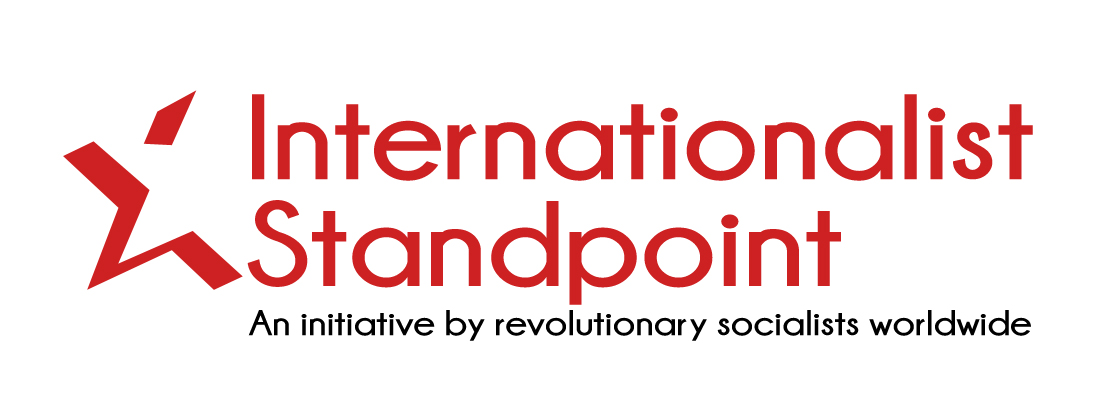We publish an interview with Prof. Sharad Onta from Nepal. Comrade Ecehan Balta met him at the 3rd Nyéléni Global Forum on Food Sovereignty in Sri Lanka and asked him some questions about the situation in the country from his point of view.
EB: Could you introduce yourself to us?
SO: I am a retired Professor of Public Health from a public university in Nepal. Currently, I volunteer as the country coordinator of the People’s Health Movement, Nepal Country Circle. I am also associated with an organization, Physicians for Social Responsibility, Nepal (PSRN), which is affiliated with the global network International Physicians for the Prevention of Nuclear War (IPPNW).
I am involved in research, knowledge-sharing, and advocacy for the right to health, with a spirit of equity and justice in health.
EB: The recent developments in Nepal have been reflected in the international media as an outburst of anger among the youth triggered by the shutdown of social media. However, I assume the roots are deeper. What other factors do you think lie behind the anger?
SO: The way the international media reflected the events is only partly true. The shutdown of social media by the government was just the immediate trigger for the youth protests in the streets. The main issues raised by the youth were widespread corruption in the system, denial of basic services, poverty, youth unemployment, and so on.
After some days of preparation, the protest was organized legally, with prior formal permission from the government authorities. It was quite peaceful and non-violent as planned. But as the days passed, the number of people taking to the streets grew far larger than the organizers had expected. Despite their repeated instructions to maintain peace, the crowd broke through security barricades, entered the parliament building, and destroyed it. The security forces then opened fire, killing several young demonstrators.
In response, the next day the protests escalated beyond anyone’s imagination. Destruction of public and private property was no longer limited to Kathmandu but spread across the country.
There are a few critical questions:
- Obviously, there was infiltration in the demonstrations – but who were they?
- There were other options to control the crowd, so why did the security forces open fire and kill so many innocent young demonstrators? Could there have been some other unseen force behind the killings?
- Why was the army mobilized? Why couldn’t the country’s main security force protect invaluable government structures like the parliament building, the office of the president, the ministries, or the Supreme Court?
- The youth protestors have declared that they were not involved in destroying public structures or private property. I believe them, because I believe in their dreams to clean the country of corruption. Thenwhocarriedout the destruction – and why?
I think it is extremely crucial to search for the answers to these questions to understand the true picture of the root causes of the situation. There may be many more questions. I am elaborating in this way to respond to your question about the deeper roots of the youth’s anger.
EB: In terms of global relations, how did the major imperial powers contribute to the events leading to the recent developments, and how have they reacted?
SO: Geo-political interests cannot be excluded from most events in any country. This also applies in the recent case of Nepal. There are several reasons to believe that global powers may have interests in the current events. These interests may even contradict each other. Strong manipulation and interventions by these powers, separately, are visibly possible. In addition to the internal factors, the penetration of their interests, designs, and power into the current youth movement can be a decisive factor.
They have reacted to the situation in Nepal diplomatically, congratulating the newly appointed prime minister and expressing their commitment to continue supporting Nepal. They have not yet reacted in political terms. In addition, a historic moment for Nepal is that a world-renowned Buddhist guru, a Tibetan refugee, congratulated the new prime minister. I consider this historic, since, as far as I remember, he has never congratulated or shown concern about the nomination or election of a prime minister in Nepal in the past. It is unclear to me why he is interested in this government. His deep political interest behind the current change in Nepal cannot be denied.
EB: As a result of the mass movement, the Prime Minister resigned. This is seen as a sign of a major transformation. How do you expect these developments to unfold in the short term?
SO: The resignation of the prime minister less than 48 hours after the mass movement indicates significant consequences for both the short- and long-term political course of Nepal. This has created a point of transition with multiple possibilities for transformation. The course of transformation from this transitional point in the short term is not yet clear or predictable.
In the short term, the stability of this interim government is not yet ensured. It depends on — though cannot yet be predicted — what role visible and hidden stakeholders will play in shaping the transformation, and how the government will respond. The interim government has committed to conducting parliamentary elections exactly six months from now. However, political analysts have already pointed out several possible subjective and objective barriers to holding elections on time. The implications of a prolonged election period cannot be foreseen now. The state may fall into a chaotic trap of uncertainty.
The resignation of the prime minister reflects the government’s failure to address the people’s dissatisfaction with its performance and governance. It is also an admission of that failure. This will make it very difficult for the existing political parties to regain the trust of the people in the long run.
EB: At present, does the public anger at the policies of the left-labelled government make it difficult for the popular movement to channel itself into a progressive alternative? How widespread is the call in the street for the return of the king? In your view, what strategies should social opposition in Nepal adopt going forward?
SO: At present, a leftist party (identified as a Communist Party) was in the leading position of the government with the support of a social democratic party. Therefore, the dissatisfaction and anger of the people was directed primarily against the ruling leftist party. Other leftist parties (also identified as Communist Parties), outside the government, were not supporting the ruling party for multiple reasons. This makes it challenging for the popular movement to channel itself into a progressive route. However, there are still opportunities for the movement to restore a progressive trend.
The call for the return of the king is still alive in Nepal, although it is not widespread in the streets. It should be seriously noted that support for the call to restore the monarchy is invisibly backed by external powers. Such powers may have different interests in reviving monarchy in Nepal.
The strategy of the social opposition in the current situation should focus on saving the present constitution and safeguarding the federal democratic secular republic. For this, it is a prerequisite to reform the structure of political parties with the spirit of transferring leadership to the young generation.
EB: Around the world, we also see left, socialist or communist-labelled governments that once promised more equality and freedom turning into reformist, pragmatist or even authoritarian leaders. What is your perspective on this issue? In your opinion, how can this vicious circle be broken?
SO: My perspective on this issue is that no power can be progressive – socialist or communist – just by its name or logo. The name itself does not reflect reality. Progressive changes cannot be achieved only by desires, emotions, and promises. There are rules – theories and principles – of progressive change. But they are not only theories and principles; they also require eternal commitment, honesty, and skills. Progressive changes can be achieved by understanding these rules and honestly applying them in real life. In my view, the vicious circle can be broken by internalizing these principles and transforming them into action.
EB: Finally, is there anything else you would like to add?
SO: In Nepal, the anger of the young generation is a response to the current situation in the country. It is natural and rational. Their movement is genuine and reflects their dreams of a lawful state with justice for the people and happiness. Their protest was not against the system of the country. It was against corruption, dishonesty, and the irresponsibility of the leadership toward the people.
There are several groups of young people in the country. These groups are not integrated or well-coordinated in action. Many of them function independently in different forums. Unfortunately, perhaps due to inadequate experience and organization, they could not foresee that their movement could be hijacked by unknown hidden forces and used for their own interests. This is what happened in Nepal and led to the current devastation.
It is time for Nepal to transfer leadership to the young generation. But this requires a clear precondition: the young generation must clearly understand why they should lead (the mission of leadership) and be capable of how to lead (the skills to guide and protect the country and the people).



